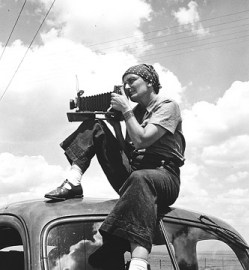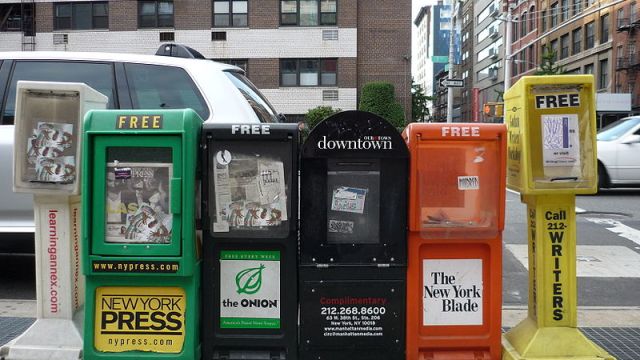When Women Point And Shoot

You don’t think much about photography until you have a photography major in the house. And then you find yourself looking at the world around you differently, framing dramatic elements and contrasting colors in your everyday surroundings the way you hope this particular photography major is doing. You find yourself paying closer attention to the pictures used in print advertisements. You find your ears perking up at the mention of the words “shutter speed” or “foreshortened perspective.” You find yourself lingering over the biographical sketches of women like Dorothea Lange, a Depression era photographer who cataloged the Great Migration, or women like Diane Arbus, an early twentieth century photographer whose sense of style you used to think was weird, but are now willing to accept as avant garde.
Which is why the review of the Museum of Modern Art’s two shows about women photographers, Pictures by Women: A History of Modern Photography and the smaller Mind and Matter: Alternative Abstractions, 1940s to Now, captured my attention yesterday while I was reading the New York Times.
“Generous helpings of Levitt, Lange, Diane Arbus and Nan Goldin serve to vary the show’s busy pace, though some of the sharpest experiences come in one-picture encounters: with Marketa Luskacova’s murky, Brothers Grimmsian portrait of village bellringers in Slovakia; Jeanne Moutoussamy-Ashe’s glancing impression of a racially bifurcated South Africa; Mary Beth Edelson’s all-female Last Supper; and Gundula Schulze-Eldowy’s shot of herself being attacked—and what’s going on here?—by a furious woman in Berlin.”
A Gathering of Women With Cameras New York Times
I’ve watched a budding auteur begin to learn how powerful the camera can be—how line and form and color can influence what a viewer experiences when they look at a picture by a serious photographer. Holland Cotter, the author of this review, succinctly distills into a few short sentences a philosophy that seems as appropriate today as it was when the first woman broke into the ranks of professional photography.
“No matter what the content, all these pictures are political, because in each of them a woman was behind the camera, and at the moment she snapped the shutter, she was doing something women had only recently begun to do: use technology to select and control an image of the world.”
A Gathering of Women With Cameras New York Times





